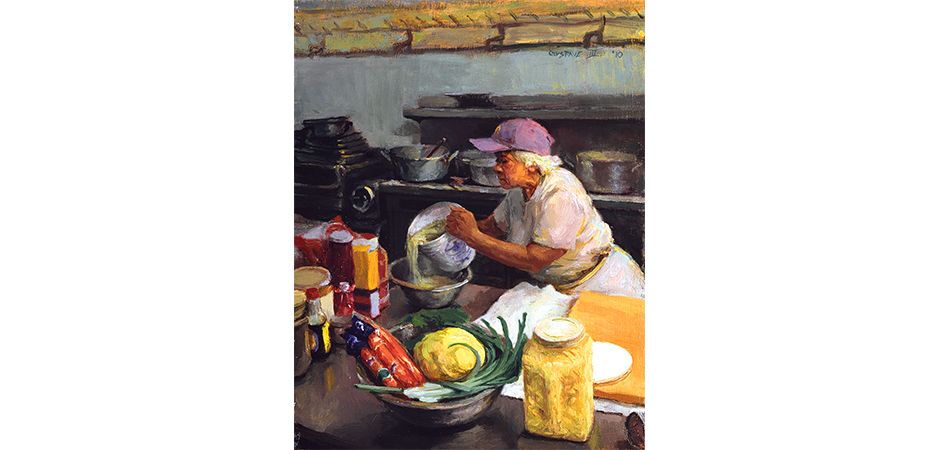On Exhibit: ‘A Work in Process’
Edgar Degas drew the eyes of the world to New Orleans when he captured on canvas a scene from a Crescent City cotton office in 1873. Nearly a century and a half later, artist Gustave Blache III turned his attention to another New Orleans setting that’s equally ordinary and extraordinary—the kitchen of the famed restaurant Dooky Chase. His colorful oil portraits of Leah Chase tackling such mundane tasks as stirring a pot of gumbo and greeting restaurant guests will be part of a solo show of Blache’s work at the Louisiana Art & Science Museum beginning March 11.
Blache’s detail-rich portraits shed light on real people engaging in real-life vocations—from Chase in the kitchen to groups of curtain cleaners, mop makers and art conservators.
“He chooses professions whose primary activities not only require use of one’s hands but also occur mostly behind the scenes,” says Elizabeth Weinstein, LASM director of art interpretation and curator. “Reinforcing this connection with the past is the modest scale of his paintings and the ornate framing, both of which encourage viewers to take their time and really look at what is taking place.”
Each of Blache’s series focusing on a specific occupation has its own unique qualities, Weinstein says—from the soft, romantic lighting of the curtain cleaner series to the factory atmosphere and “oodles of thread” in the mop maker paintings. Two of Blache’s portraits of Leah Chase are now part of the Smithsonian Institute’s collection, one at the National Portrait Gallery and one at the new National Museum of African American History and Culture. LASM is the first venue to exhibit the artist’s most recent series on art conservation, which documents the goings-on at Simon Parkes conservation studio in New York.
An opening reception will take place at 6:30 p.m. March 11, with the artist in attendance.
“‘A Work in Progress’ is sure to be a crowd-pleaser,” Weinstein says. “These artworks send the message that hard work—even in those occupations considered most humble—is worthy of recognition.”












